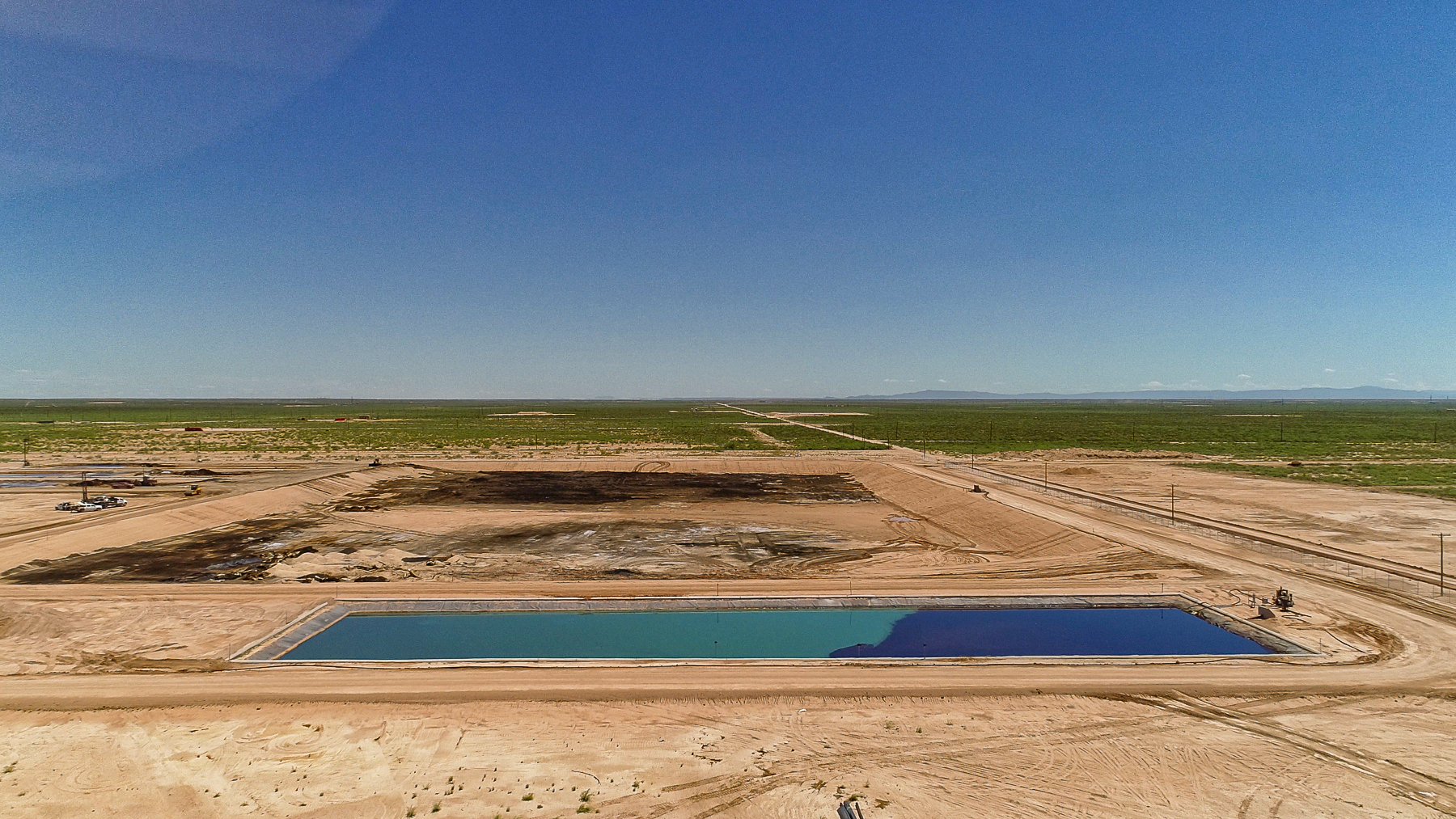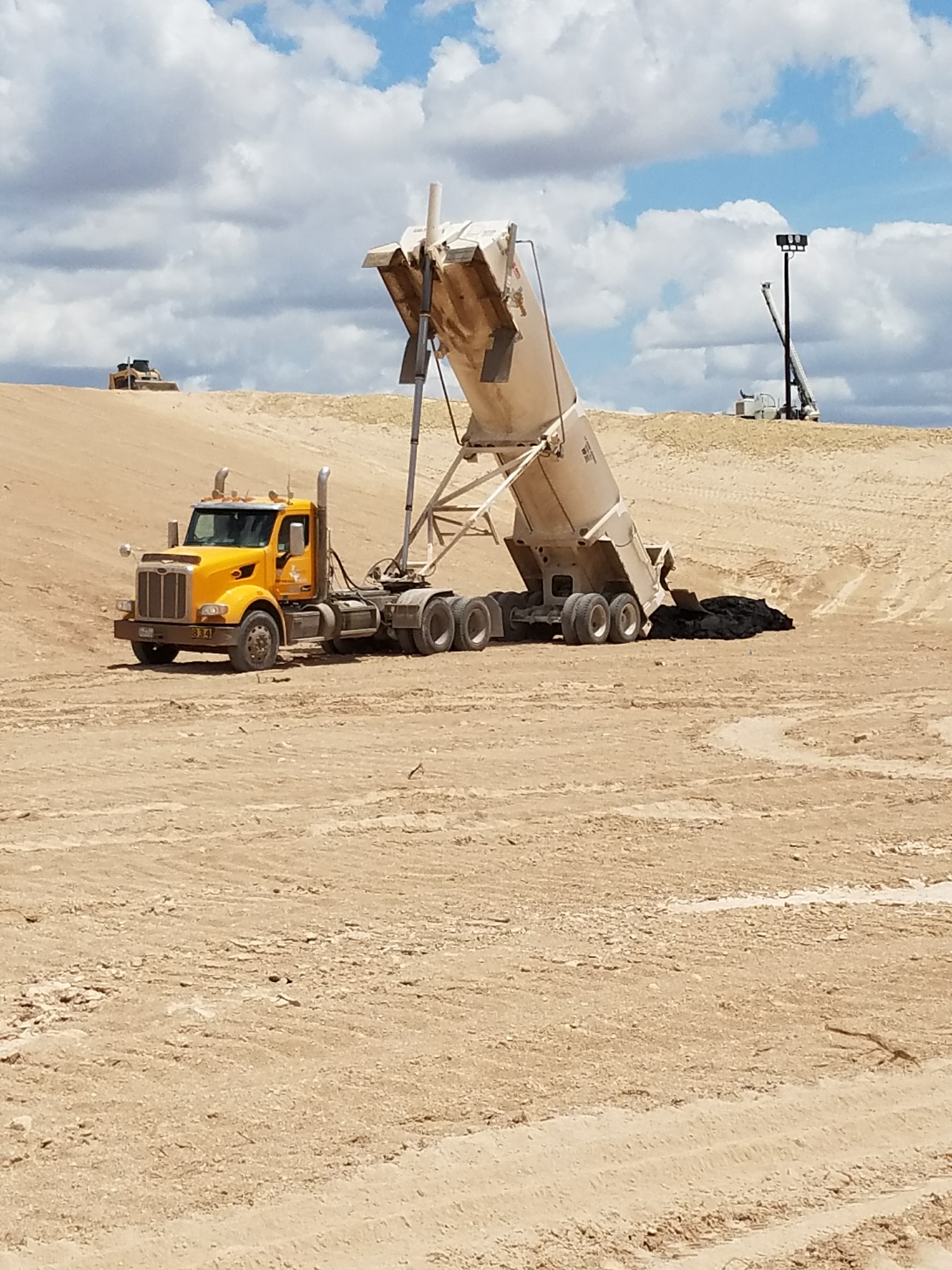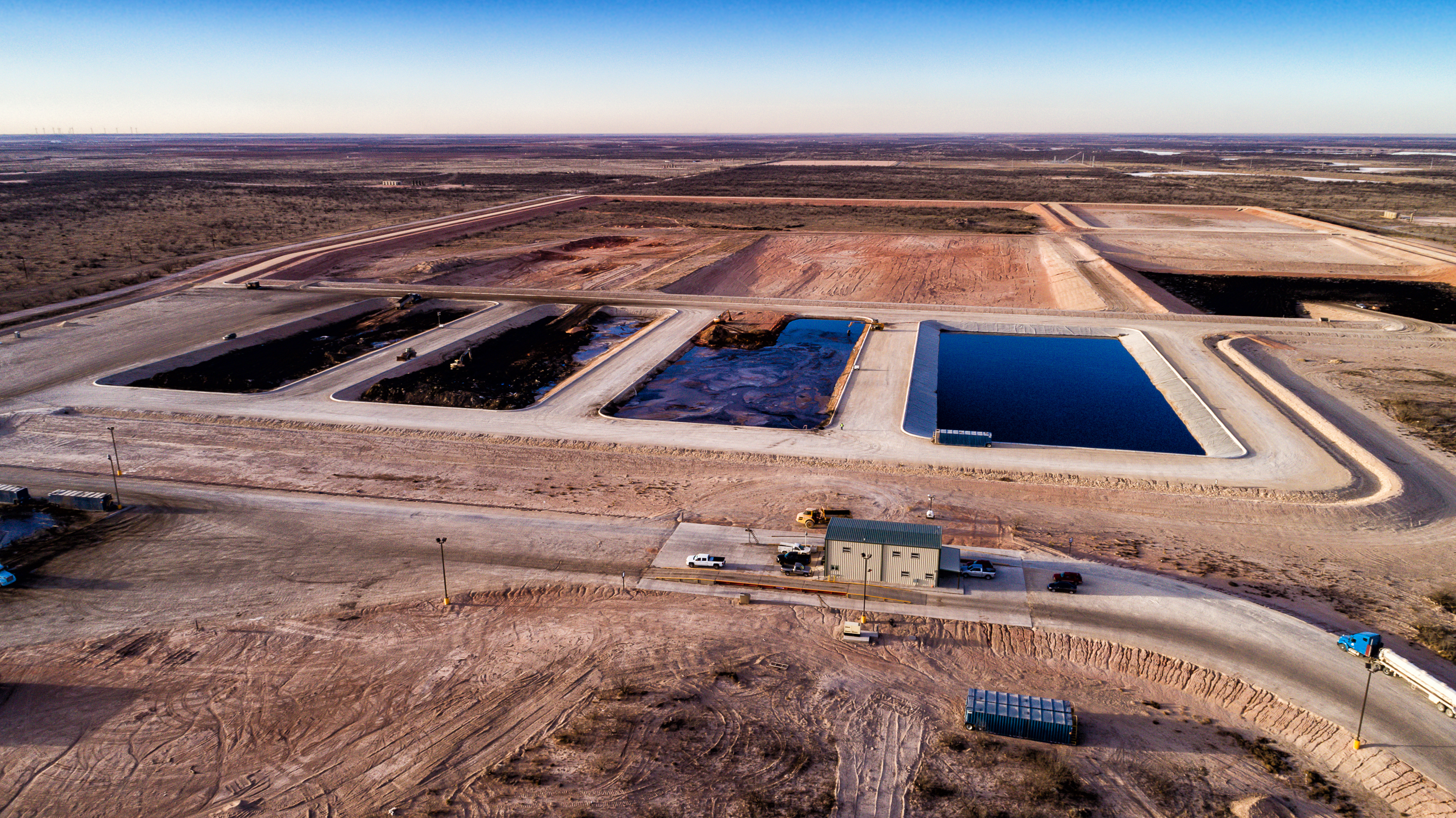More drilling, longer laterals boost Basin business for environmental companies. Meanwhile, reduction in federal regulations has little effect on state-dominated Texas companies.
Far from signs of habitation, the grounds (and waters) of the Deep Six landfill strike a contrast with the surrounding landscape. Deep Six is operated by Petro Waste Environmental.
By Paul Wiseman
With all the talk about reducing federal regulations through agencies such as the Environmental Protection Administration, Texas, and therefore most of the Permian Basin, is relatively unaffected, say several firms tasked with handling environmental issues.
That’s because Texas, unlike most western states, has very little acreage owned—and regulated—by the Federal government. Environmental issues for privately-owned lands are controlled by state agencies, which in Texas include the Texas Railroad Commission and the Texas Commission on Environmental Quality (TCEQ).
Because Texas is an oil-friendly state, regulations are less stringent and less volatile than in many states. Petro Waste Environmental (PWE) Founder and CEO George Wommack put it this way: “It’s much more stable [on the state level], I would definitely say. I think people know what to expect because Texas does a very good job of regulating the oil and gas industry. It’s a state that has a very long history of oil and gas production, so it has a very well-defined set of regulatory regulatory language related to everything that we do.”
Offloading at the Big Lake landfill site operated by Petro Waste Environmental (PWE).
For environmental companies, a reduction in regulations might actually be bad news: while oil activity might increase, environmental work might drop off.
So in Texas, with activity growing based solely on higher prices, there’s more work for everyone, including environmental firms. Most of PWE’s business currently comes from the Midland and Delaware Basins, with less coming from the Central Basin Platform.
San Antonio-based PWE opened processing facilities in the Eagle Ford in 2014. At that time the Eagle Ford Shale was in the forefront of the horizontal drilling movement, and those long laterals create much more drilling waste and cuttings than do vertical wells. Though PWE shut those facilities down in 2015, the company has since commenced construction of its first landfill in that play.
In 2014, and now again, since the boom has resumed, it is big companies who are doing the drilling, using horizontal rigs and oil-based mud systems.
“The bigger the company the more concerned they are with legacy environmental risks, so the more likely they are to elect to haul all their drilling waste to an offsite commercial, more highly-regulated disposal facility,” Wommack said. PWE saw and filled that need then.
What once was part of the substrate now finds its repose at the surface. These tanks at the Howard Landfill are receptacles for drill cuttings. Petro Waste Environmental operates the site.
The sea change that washed them temporarily out of the Eagle Ford and deposited them in the Basin swept in during the 2014-2015 timeframe. By 2014, the horizontal revolution had begun to make huge inroads in the Permian—and at the same time, oil price declines beginning that year made the Basin much more economically attractive than the Eagle Ford.
“We shifted, when the market downturn hit, and the Eagle Ford dried up pretty quickly, most of our focus [going] to permitting in the Permian Basin,” Wommack said. This was perceived as a bold move that few other environmental firms took while prices were low and activity was shrinking. This made PWE more prepared than most when prices returned.
The fruit of that labor was harvested earlier this year with the opening of two new waste disposal sites: one near Big Lake and the other near Pecos. PWE already had sites near Orla and between Big Spring and Stanton. Some of these are co-owned with other firms.
Finding a location for oil-related landfill is quite an endeavor, Wommack related. The perfect site must be around 200 contiguous acres, not underlaid by any pipelines (a huge issue in West Texas), and not near a significant production area. Moreover, the land must be for sale at a reasonable price. There are also geological and engineering issues. It’s no wonder, then, that the process can take 3-5 years.
Lab Manager Brent Barron of Permian Basin Environmental Lab.
That delay makes it also little wonder that a good number of companies hesitate to make such a commitment during down times.
That’s the case for environmental work based on the drilling side. For production-based companies, such as Midland’s Permian Basin Environmental Lab, LP, it’s pretty much always steady as she goes.
Lab Manager Brent Barron says as long as there is salt water going into the ground and oil coming out, soil contamination can happen—which brings the lab business.
“Environmental consultants and laboratories have a little bit of an edge” in the boom/bust cycle, he said. “No matter what the price of oil is—when a spill happens, it still has to be cleaned up,” which means the soil must be tested before and after the cleanup.
Barron sees some uptick during boom times simply because there are lots of new wells coming on line—but those wells don’t close immediately when prices drop.
Most producers, especially the mid-to-large firms, are much more environmentally conscientious now than they were 20 years ago, so they keep the samples coming no matter the economy.
On regulatory issues, Barron echoes Wommack in saying there are few significant changes—with one exception, limited to testing. “One of the biggest changes I’ve seen is the requirement for environmental laboratories to obtain certification through a national certification program. Basically the Railroad Commission and the TCEQ require that labs producing data be certified,” he said. This began to be required about 10 years ago.
He estimates that the lab’s customer base is sorted along these lines: 60 percent are environmental consultants tasked with a cleanup; 35 percent are the producers themselves; and about 5 percent are landowners who want to make sure cleanups on their property were done right.
Waste solids are offloaded at the Howard Landfill. Environmental services are a bigger industry than ever in the Permian Basin.
PBE Lab’s main work is in analyzing soil and water samples for crude or refined contamination, saltwater spills, and the like. Predominant methodologies include analysis for total petroleum hydrocarbons, benzene, toluene, and xylene (BTEX), along with chlorides from saltwater spills.
With the flood of produced water being treated for reuse, it is not surprising that a newly expanding part of the business is in testing produced water samples. While water treatment companies do their own testing onsite, Barron said, “I’ve found that a lot of people that use them also want somebody else to test it” for verification. Typical tests are looking for iron, barium, strontium, cations, and other metals.
The boost in business from that sector is significant. “We’ve seen our water sample intake almost triple in the last year,” he noted, with much of the increase coming since the start of 2018. A small number of tests are for private individuals checking the quality of their drinking water.
At the other end of the scale is Kleinfelder, an international engineering firm with offices in Dallas, Austin, and Houston, and a significant amount of design and environmental work in the Permian Basin. Senior VP, Private Sector, Ashraf Jahangir says the company is also busy in other oil producing regions such as California, Colorado, western Pennsylvania, Ohio, the Utica and Marcellus shales, and similar areas.
He lists Kleinfelder’s bread and butter work as “environmental surveys [where] you look for endangered species—common ones that could be in that area—prairie chickens, a couple of lizards, that kind of thing from a species perspective.” They also work on permitting for Section 404 of the Clean Water Act when wetlands are involved.
Their work in the Permian is strongly connected with right-of-way for pipelines and power lines.
Like PWE and PBE Lab above, Kleinfelder has little interaction with the EPA in the Permian Basin. In contrast to the others, however, much of their government dealings involve the most local level-counties, due to their work on acquiring rights-of-way. These regulations tend to change very little over time.
Most of Kleinfelder’s clients understand the regulatory process, Jahangir said. “The clients that we have been working with, overall, the quality of what they are trying to build, whether it’s a pipeline or a facility, I think they are very cognizant of doing it in a quality manner and also being respectful of the land. They understand regulations can sometimes slow down the project, but they understand that needs to happen.”
Even so, clients still want things done as quickly as possible, he added.
Some phases of the company’s work are more affected by ups and downs than others.
For the permitting side, “In the drilling business, when [a project] initiates, there’s a lot of activity that requires, from our perspective, with engineering, permitting, construction, quality control, and those kinds of activities,” there is an uptick in work.
But on the compliance side, existing facilities may need a new permit in good or bad economic situations. Leaks and spills also occur as long as oil and gas are flowing at all. Jahangir said Kleinfelder evaluates spills and recommends remedial design changes but they do not do the cleanup.
All companies interviewed feel that producers today take environmental concerns more seriously than they did 20 or so years ago. There is at least some self-interest involved, in that product spilled is product not sold, but the concerns seem to go beyond simple economics, all the way to corporate responsibility, especially for the larger producers.














